
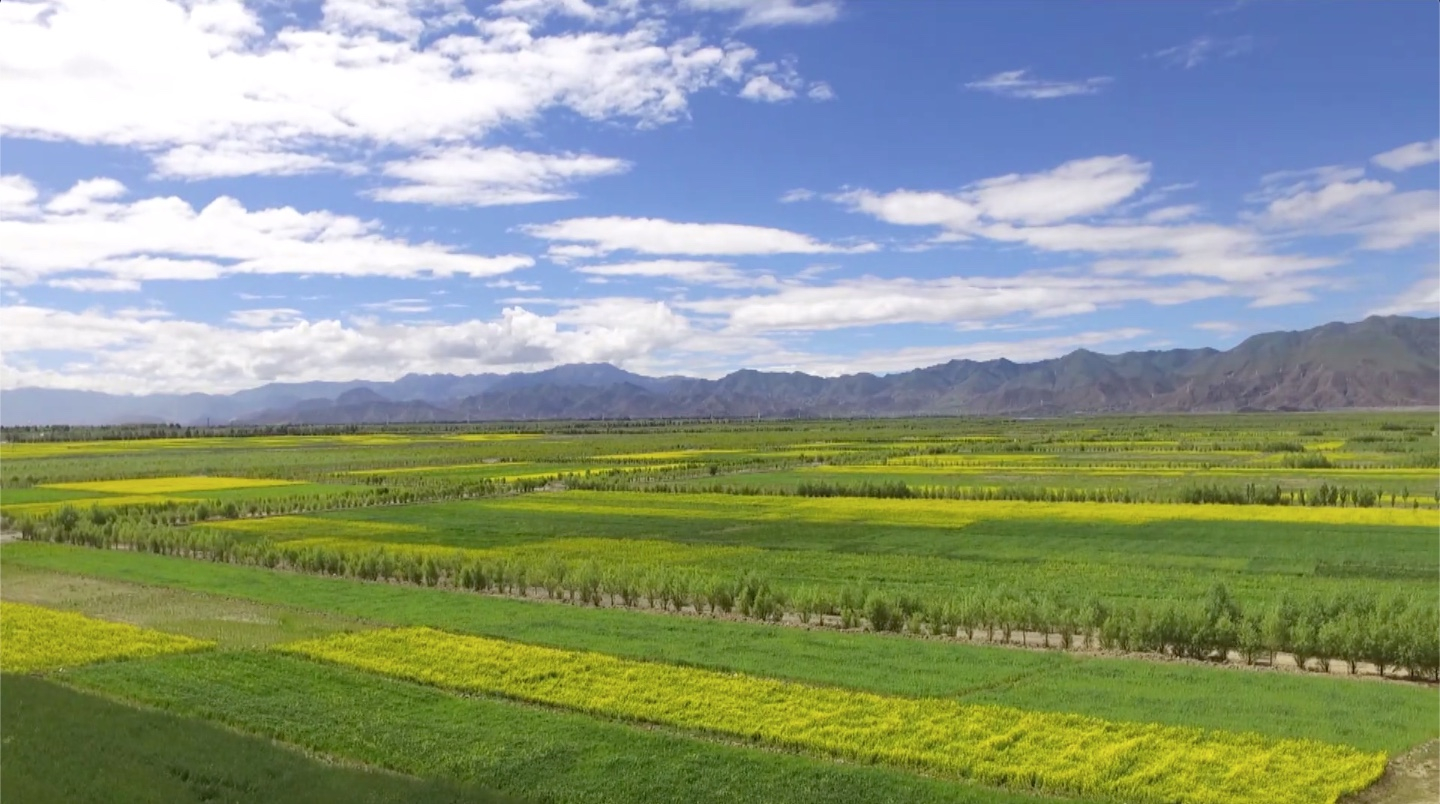
With an average elevation of over 4,000 meters above sea level, Tibet's ecological system is vulnerable and sensitive. In recent years, the SW China autonomous region's government has spared no effort to improve its ecology with a slate of measures, such as afforestation projects, and the efforts are starting to pay off.
Namling County in Xigaze Prefecture is one of the areas that have undergone significant changes. Like most areas of Tibet, it used to only have a speck of greenery here and there due to harsh natural conditions.
"In the past, when the wind blew up, we could even do a sand painting on our tables at home," resident Norbu Tsring told CGTN.
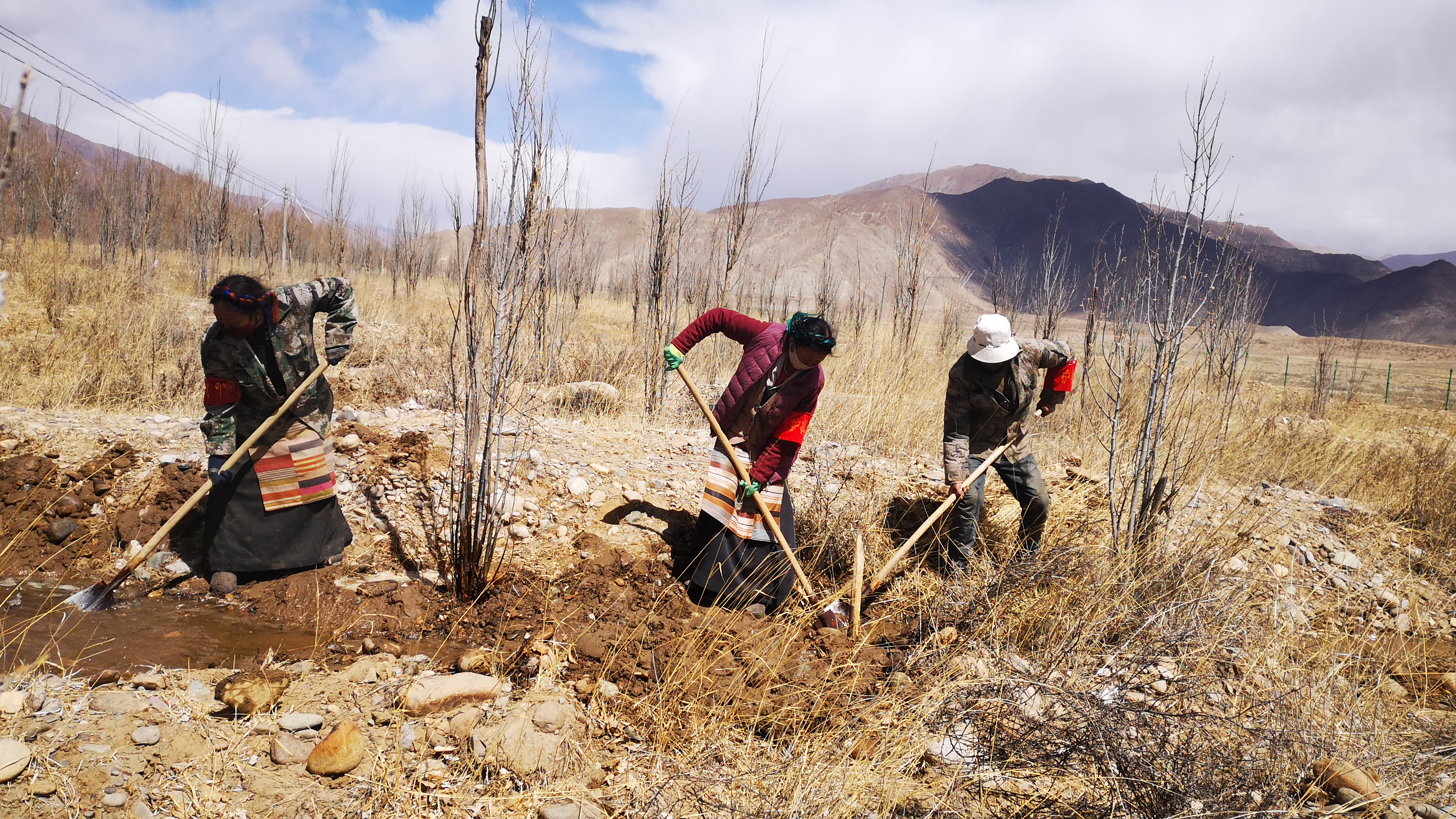
Forest rangers in Namling County of Shannan Prefecture in the Tibet Autonomous Region work to irrigate the woods in March. /CGTN Photo
In 2014, the local government launched an afforestation project in the wasteland along the Yarlung Zangbo River, in a bid to alleviate the disastrous sandstorms. But the move, undoubtedly, came as a big challenge.
Jiang Guojie, the Party Chief of the county, said that the weather poses a significant challenge.
"It's cold on the plateau, and the temperatures vary greatly from morning to evening. Oxygen deficits are also a big problem. We know that people always feel bad without enough oxygen, as do the trees," said Jiang, adding that the irrigation costs are also high.
Jiang recalled that in the beginning, many villagers didn't get the point of this initiative, as even the cultivatable lands for crops are very limited.
"It really needs boldness and resolution for such a drive," said Jiang, who was born and raised in east China's Shandong Province before taking the post as Party chief in Tibet.
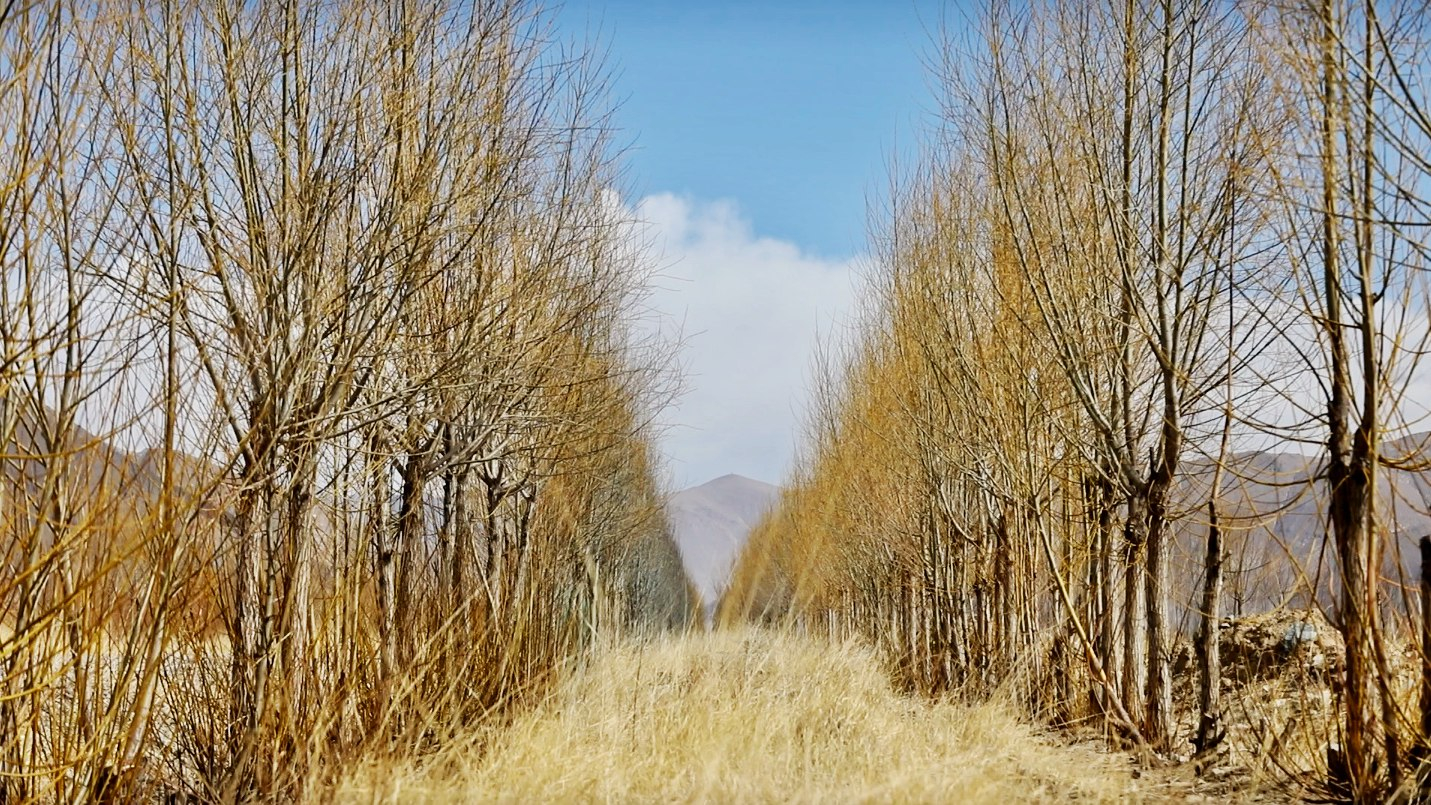
More than 20 square kilometers of woods have been cultivated in Namling County of the Tibet Autonomous Region in recent years. /CGTN Photo
Tsring is one of the locals who participate in this ambitious project as forest rangers.
"Our tasks vary in different seasons, including pruning, spraying pesticides and building fences against yaks and sheep," said the man in his 30s.
He makes at least 13,000 yuan (about 1,900 U.S. dollars) annually on the job and an extra 110 yuan (about 16 U.S. dollars) each day during tree planting season.
With unremitting efforts in recent years, we can see the Gobi Desert has turned into a large area of different trees, including sea-buckthorn, alamo and elm, among other varieties. By the end of 2018, more than 20 square kilometers (200 hectares) of woods have been put in place.
"Now the air gets a lot better without too much sand and dust. Instead, we have more oxygen," said Tsring.
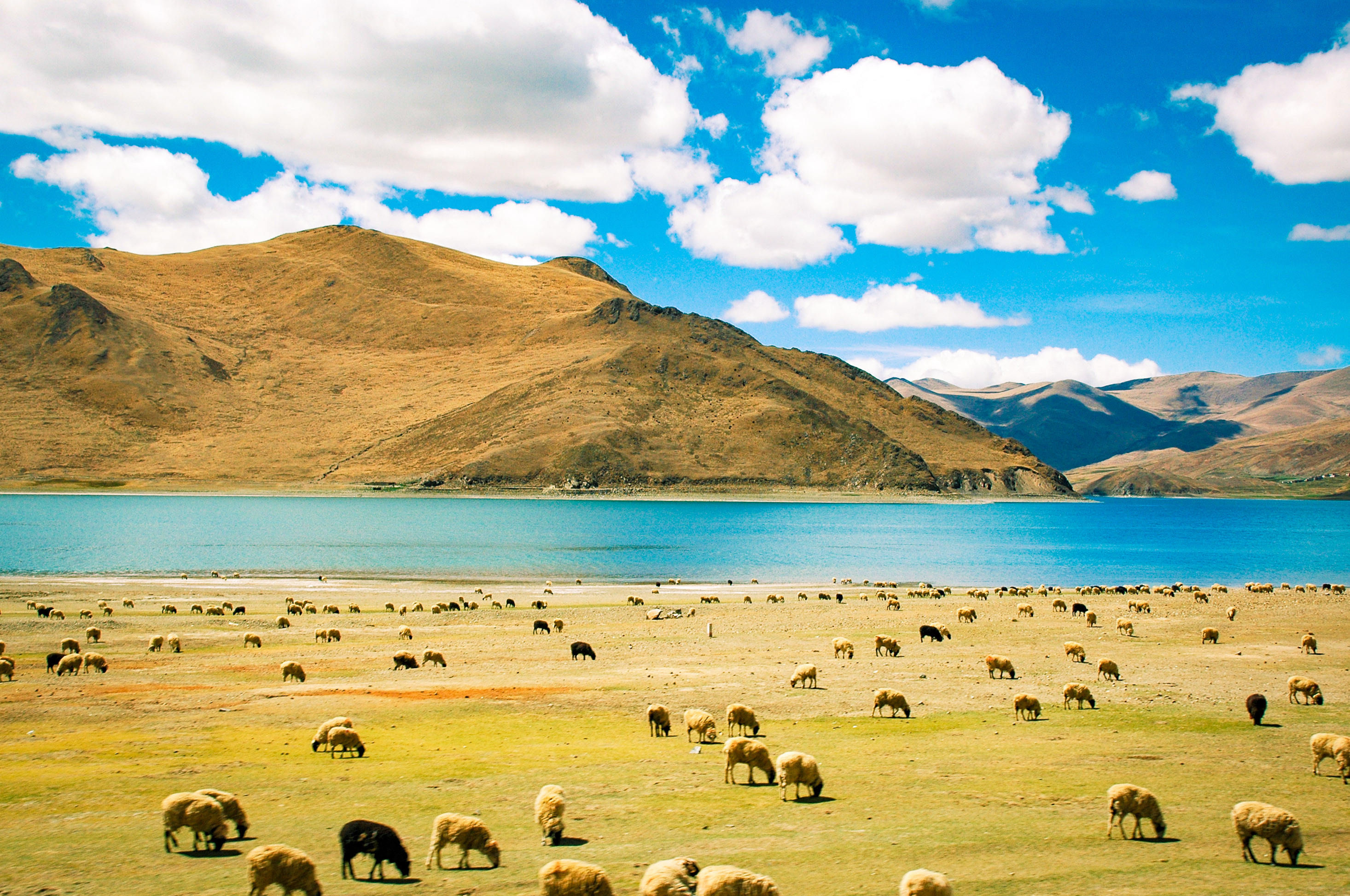
Beautiful view of Shannan Prefecture in the Tibet Autonomous Region, China. /VCG Photo
To make it a sustainable undertaking, Jiang says it is a rewarding attempt to engage in social enterprises, which can contribute both capital and expertise.
An enterprise from Shandong has invested big here to cultivate cherry-apple trees and acer truncatum, both of which have high ornamental and economic values.
This is also the practice somewhere 300 kilometers away in the Ngagzha County of Shannan Prefecture. An ecological tech firm is scientifically trying to turn the barren land there into an oasis by cooperating with Tibet’s forestry department.
Gu Wendi, an executive of a company specialized in ecological restoration, said that part of their efforts is to collect seeds of native grass and plant specimens from the mountains and have them bred in nursery gardens. The plants will later be applied in various restoration projects.
"For Tibet, its ecology should be a combination of arbors, shrubs and grass. So we also bring in different kinds of trees to plant here," said Gu.
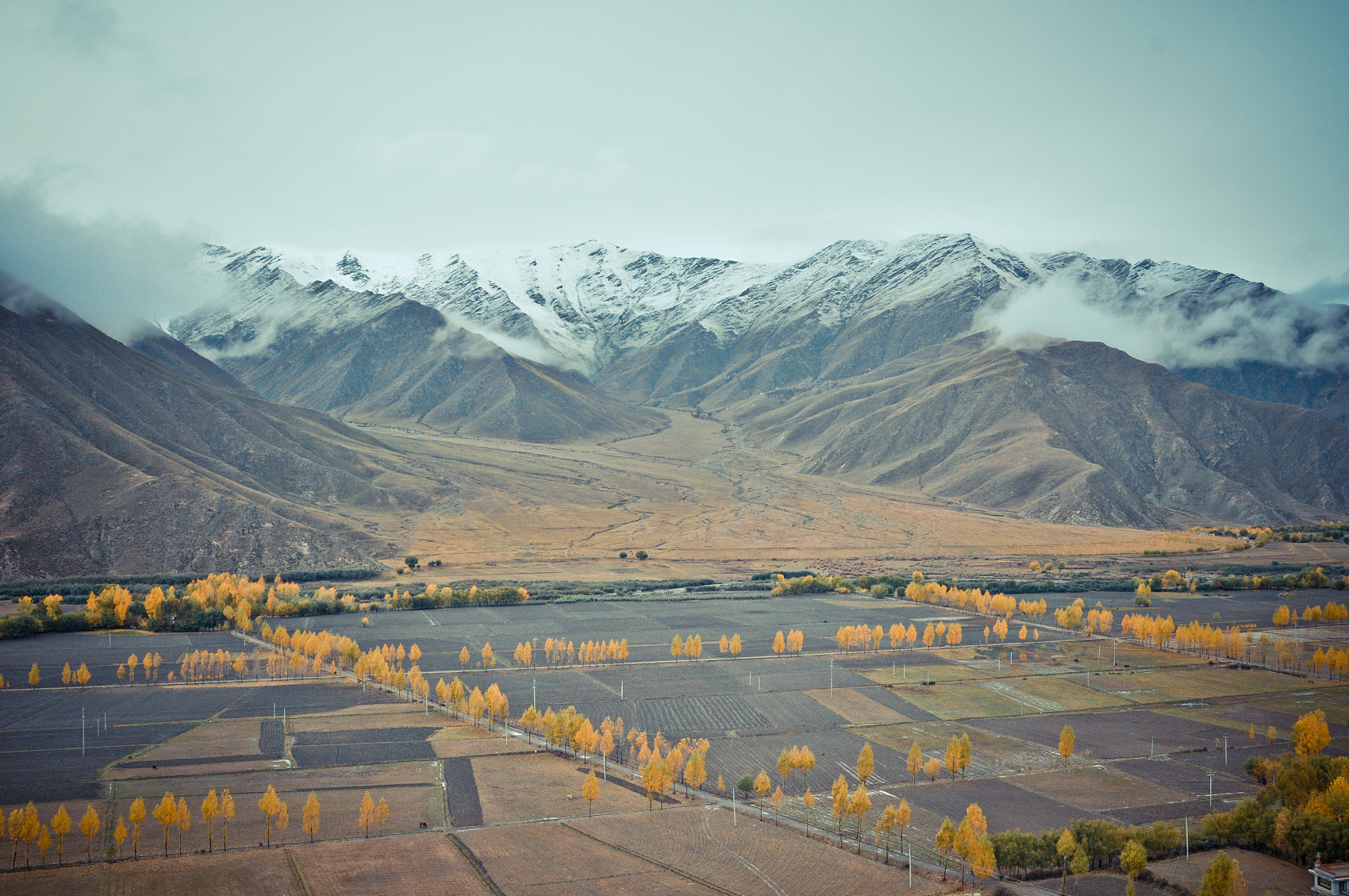
Shannan Prefecture, Tibet Autonomous Region, China. /VCG Photo
More than 400 local herd supervisors are provided with job opportunities, a new way in fighting poverty.
In 2018, the Tibet autonomous region's government invested a total of 10.7 billion yuan (1.54 billion U.S. dollars) in ecological protection, with 400 kilometers of woods being planted. More investment is expected in the years to come.
"I will continue to work as a forest ranger to create a greener homeland for our future generations," said Tsring.
(Cover: More than 20 square kilometers of woods have been cultivated in Namling County of China's Tibet Autonomous Region in recent years, which has greatly changed the local ecological environment. /Photo: Namling County TV Station)
(If you want to contribute and have specific expertise, please contact us at nature@cgtn.com.)

Copyright © 2018 CGTN. Beijing ICP prepared NO.16065310-3
Copyright © 2018 CGTN. Beijing ICP prepared NO.16065310-3